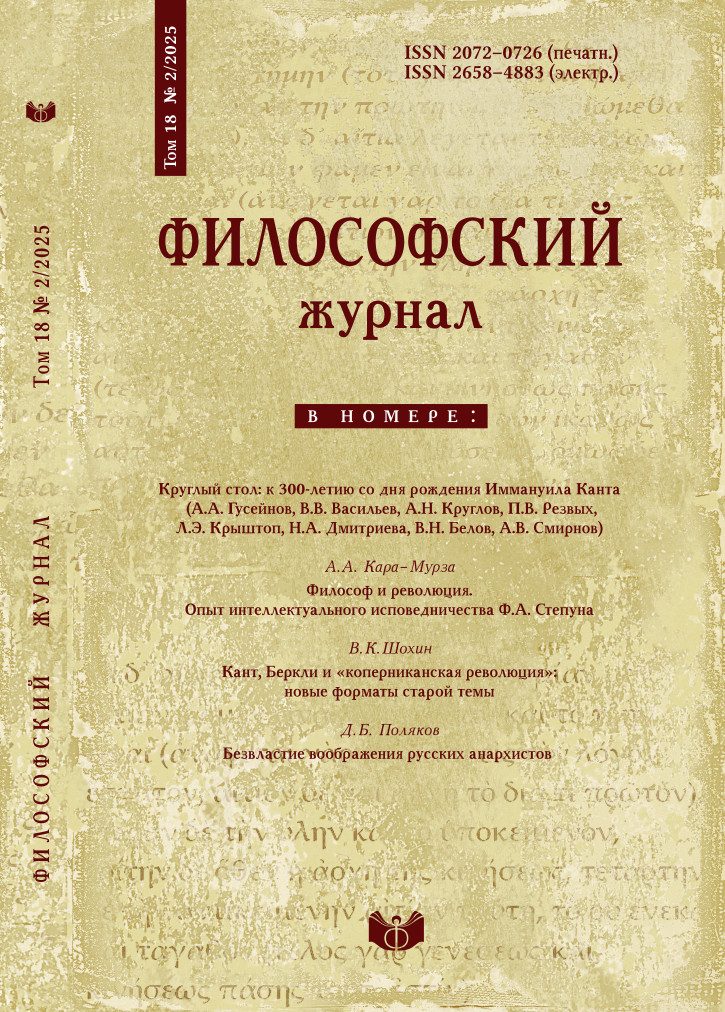Meinong and meinongians on the ontological status of “nothing”: the problem of definition
DOI:
https://doi.org/10.21146/2072-0726-2025-18-2-151-162Keywords:
Meinong, nothing, non-being, Aussersein, theory of objects, Parsons, Jacquette, golden mountainAbstract
The works of Alexius Meinong are dedicated to various strategies for describing existing and nonexistent things. An important role in his theory is played by the idea of a prejudice in favor of the actual, which explains his desire to find a correct description of the ontological status of nonexistent entities. He specifically examined things like the round square, the existent golden mountain, and many others; however, his writings show no signs or attempts to describe the ontological status of “nothing”. In this regard, one of the objectives of this study is to determine whether it is possible to provide a coherent description of “nothing” while avoiding contradictions solely using the tools of his theory. Simultaneously, within contemporary analytical metaphysics, this concept has begun to be regarded as an independent object of investigation. Many representatives of the so-called nuclear school of Meinongian philosophy have attempted to address the problem of “nothing” by formulating their own theories and approaches. Therefore, this paper also examines such approaches to solving the problem of “nothing”, as presented in the works of Parsons, Routley, and Jacquette. Although Parsons and Jacquette developed and interpreted Meinong’s ideas, they sought to adhere to the fundamental principles of his theory, including the distinction between nuclear and extra-nuclear properties. In this context, it is necessary to identify the merits and shortcomings of each approach, as well as to compare their principles with the main tenets of the original theory of objects. The problem of “nothing” becomes particularly relevant in the context of the development of modern Meinongian theories, where the question arises about the possibility of considering it as an intentional object in principle. How can we even conceive of “nothing”? What properties might it have? We have attempted to address these questions in this study.






